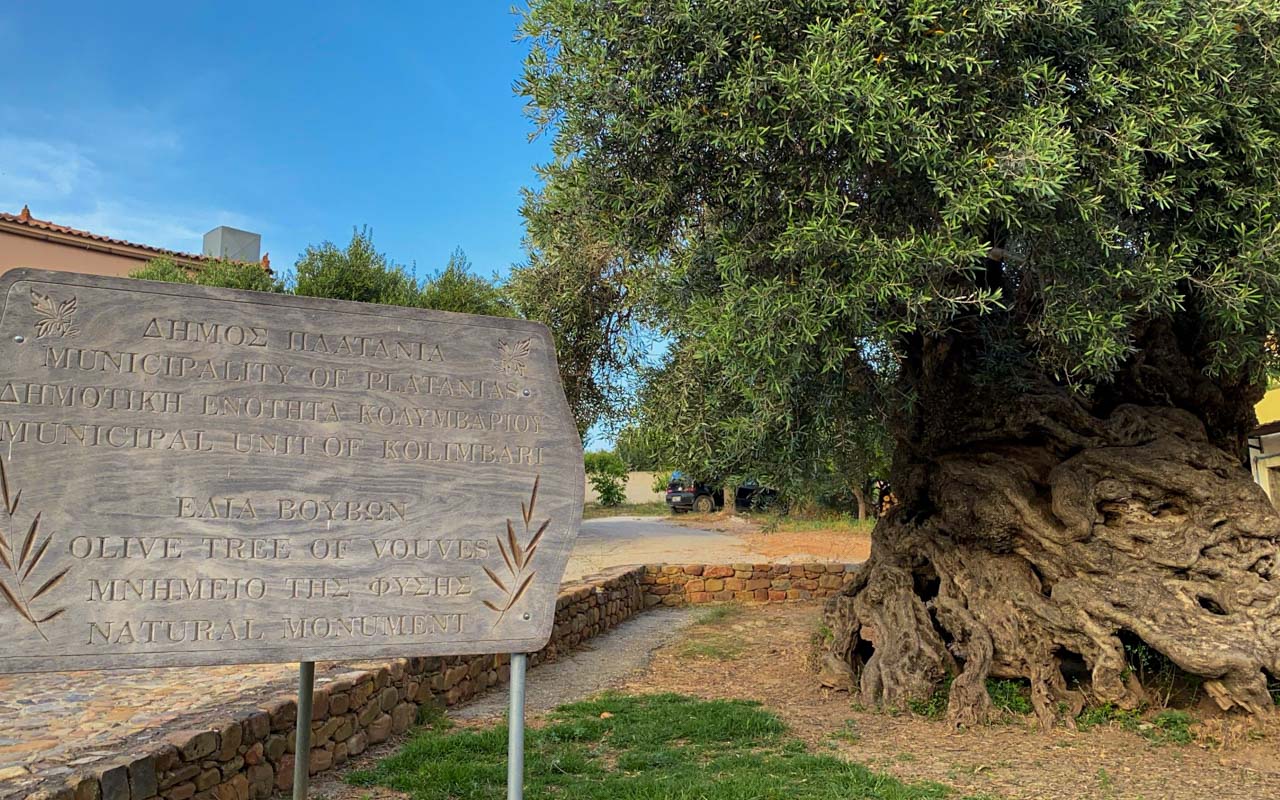
The oldest olive tree in the world is located in the village of Ano Vouves of Kissamos in Chania, Crete, Greece. The ancient tree is 3000 years old, as determined by the international scientific community.
The ancient olive tree in Vouves has a trunk with a circumference of 12.5 meters (41 feet), and a diameter of 4.6 meters (15 feet). It belongs to the local tree variety of tsounati and was grafted at a height of three meters onto a wild olive tree.
Because of the grafting, its trunk has been so beautifully shaped by nature that it resembles a sculpture. In 1990, after a unanimous decision in the prefecture of Chania, the Vouves Olive Tree was declared a Natural Monument of great importance due to its status as the world’s oldest tree of its kind.
The oldest olive tree still produces high-quality olives
The fruits of the ancient olive tree produce the best olive oil in the world, making the area the cradle of olive cultivation on the island of Crete. The trunk of the tree is now hollow as there is no heartwood, so the olive is renewed outward and the heartwood gradually rots away.
Since the olive tree is constantly renewing its wood, it has served as a a symbol of immortality since ancient times.

Thousands of tourists visit the stunning tree every summer to marvel at it and learn its history. They are mainly impressed by its enormous shape and the imposing volume of the trunk but also by the fact that it has remained alive and fruitful for 3000 years.
The site of the olive tree, including the entire hill on which several villages are situated, has thousands of olive trees and the villages are widely believed to produce the best olive oil in the world.
Why is the Olive Tree Important in Greece?
The olive tree has been associated with Greece for millennia.
It symbolizes peace and prosperity, as well as the hope of resurrection and prosperous life. The typically Mediterranean Greek landscape is dotted with these trees, and Greeks throughout the centuries have been inextricably linked with this plant.
For Ancient Greeks, the olive tree was one of two of the most respected mythical trees, along with the oak.
The deeply rooted love and respect shown to this tree by Greeks has survived throughout the centuries.
Greek olive oil
Greek olive oil, or “Liquid Gold,” as Homer called it, has been part of Greece’s history since antiquity. It is an irreplaceable nutritional component of the Greek diet.
Ancient Greeks also used olive oil as part of their efforts to enjoy a healthy life and to promote longevity, and used it as a cosmetic for the skin and hair. Today, Greek olive oil is considered by most as the best in the world.
The history of humanity’s use of the olive dates back to ancient history. In his work “Origine des plantes cultivées,” botanist Augustin Pyrame de Candole writes that our cultivation of the tree started some time around 4000 BC—and that its origin is from the coasts of Asia Minor.
Today, throughout the world, there are approximately 800 million olive trees—of which approximately 95 percent are cultivated in the Mediterranean basin, which has the best soil and climatic conditions for olive cultivation.
The olive is widely grown all over in Greece. Its cultivation, which is greater than any other type of fructiferous tree, occupies approximately 15 percent of cultivated agricultural land and 75 percent of arboraceous cultivations in the country.
See all the latest news from Greece and the world at Greekreporter.com. Contact our newsroom to report an update or send your story, photos and videos. Follow GR on Google News and subscribe here to our daily email!



